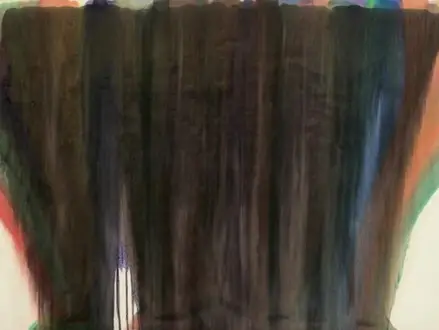Title of Artwork: “Beth Zayin”

Artwork by Morris Louis
Year Created 1959
Summary of Beth Zayin
While working on the meticulous process that he used to preserve the picture plane’s two-dimensional surface, Morris Louis came up with the idea for his magnificent veil Beth Zayin. When Louis and Kenneth Noland visited Helen Frankenthaler’s workshop in 1952, they discovered a new technique for painting using paint stain.
All About Beth Zayin
To answer formalist issues, his Veils would depict a nonfigurative expanse of space on the canvas. Both Jackson Pollock’s drip painting and The Veils’ basic concepts are shared by the Veils, as neither relied on lines, edges, or contours to denote tangible things.
Boston Museum of Fine Arts: Morris Louis, 1912-1962 (1967), p. 11; Michael Fried). One of the most influential art groups of the day, helmed by Clement Greenberg, was immediately drawn to Louis’s Veil paintings in 1954. For Greenberg, upholding the integrity of formal concepts in painting’s foundational elements was paramount.
His color-staining method was in harmony with Greenberg’s ideas and incorporated in Louis’s first solo exhibition at French and Company in New York, when the spectral Veils were displayed.
Without idiomatic brush application, Beth Zayin’s work lacks texture and gesture. Louis was able to do this by applying waves of magna, a synthetic acrylic resin paint, on the unprimed duck canvas. As a result, the finished product appeared to be a series of colour veils.
It would be acclaimed as a great accomplishment by the art world in the years to come “Sometimes a material is directly manipulated without the use of any tools. Gravity concerns overtake space considerations in these situations;” ” (Robert Morris, “Anti-Form,” Artforum 6, no. 8, April 1968, p. 35).
In addition to the bright pigment saturation on the surface of Beth Zayin, the massive scale of the Veils gives the present picture a prowess that matches its name. Beth Zayin, like the majority of the Veils, was given its title after the artist’s death by the estate.
The Hebrew letter Zayin, which has the literal meaning of “weapon” or “sword,” stems from a root word that signifies “food.” Contradiction is a constant in this work, as bands of dazzling and twisting colour-shapes appear to submerge and rise from the deeper veils of the painting at the same time.
Beth Zayin, on the other hand, is awash in vibrant colour, erupting from the borders of the darker veils and overwhelming the composition with its primordial energy. It is via Beth Zayin’s expansive grandeur and precise method that the victory of colour-field painting is exemplified.
Information Citations
En.wikipedia.org, https://en.wikipedia.org/.





















